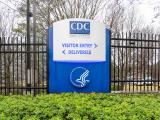Apr 15, 2013 (CIDRAP News) – A new set of journal articles related to the 10th anniversary of the SARS epidemic in 2003 says the episode did much to boost recognition of the need for coordinated international and national responses to emerging infectious diseases.
The articles and commentaries in Emerging Infectious Diseases reflect on the effects of SARS (severe acute respiratory syndrome), which arose in China in late 2002 and spread to more than 30 countries in early 2003, sickening about 8,000 people and killing around 800. The outbreak was first publicized by the World Health Organization (WHO) on Mar 12, 2003.
Among the reports is one describing two new SARS-like coronaviruses—close relatives of the SARS coronavirus—found in bats in China. The new viruses are more distant relatives of the novel human coronavirus that has caused illnesses in 17 people, with 11 deaths, in the past year. All of the cases had connections to the Middle East.
Publication of the articles comes as the world is contending with still another emerging pathogen, the novel H7N9 influenza virus in China, which has infected at least 64 people and killed 14 in recent weeks.
Surveillance and response
In a "synopsis" piece, a team led by Christopher R. Braden, MD, of the US Centers for Disease Control and Prevention (CDC) reports on progress in global surveillance and response capacity in the 10 years since SARS emerged.
They review the milestones of the epidemic, from its silent emergence in southern China in November 2002 to its spread to Hong Kong and, boosted by a "superspreader," from there to many other countries. They say the SARS epidemic powerfully stimulated international cooperation to fight emerging diseases.
"Perhaps the most important legacy of SARS is the recognition of the critical need for a multilateral response, led by WHO, in the event of a rapidly moving but ultimately containable global epidemic," they write.
"The central role of WHO in coordinating the laboratory network that identified the etiologic agent and shared reagents, the epidemiology network that characterized the spread and identified the most effective control measures, and the policy and communications network that incorporated rapidly changing knowledge into measured travel advisories was critical for the control of the epidemic and a credit to WHO."
The SARS epidemic dramatically reduced global travel and business, showing how disruptive a new pathogen could be, Braden and colleagues observe. Those effects stimulated pandemic flu planning and surveillance, a greater focus on global health security, and improved laboratory and surveillance networks.
Further, the episode spurred efforts to update the International Health Regulations, which had not been revised since 1969, the article says. The regulations took effect in 2007. However, fewer than 20% of the 194 WHO countries that accepted the regulations had complied with their core requirements by the June 2012 deadline, according to Braden and colleagues.
Another effect of SARS was to spur the establishment of new national public health agencies in Canada (the Public Health Agency of Canada, or PHAC) and the United Kingdom (the Health Protection Agency), the authors say.
In a related perspective article, a team led by Jeffrey P. Koplan, MD, MPH, of Emory University, a former CDC director, says the value of national public health institutes was one of the major lessons of SARS. Koplan is joined by authors from the PHAC and its counterparts in Hong Kong and China.
They note that more than 80 national public health institutes are now linked through the International Association of National Public Health Institutes, which promotes the establishment of new institutes and helps strengthen existing ones.
Still another perspective article looks at the chances for more emerging infections in East and Southeast Asia. Peter Horby, MBBS, of Oxford University's Clinical Research Unit in Hanoi is the lead author.
Horby and colleagues comment that the region is a hot spot of socioeconomic and environmental changes. Some of these, such as urbanization and agricultural intensification, may lessen the risk of emerging diseases, but on the downside, increased concentrations of livestock, people, and products may increase the impact of any single emerging disease, they write.
Novel SARS-like viruses
The two novel SARS-like viruses are described by a team of Chinese researchers from Beijing and Shanghai. In analyzing samples from 14 bat species in 2010 and 2011, they identified novel betacoronaviruses in Rhonolophus pusillus and Chaerephon plicata bats. They named the new strains Bat Rp-coronavirus/Shaanxi2011 and Bat Cp-coronavirus/Yunnan2011.
To assess the two viruses' relationship to other coronaviruses, they constructed a phylogenetic tree based on the nucleotide sequences of the RNA-dependent RNA polymerase gene. This revealed that they were closely related to SARS coronavirus (92.9% to 94.8% identity) but were fairly distant from the novel human coronavirus, also known as HCoV-EMC (66.2% to 67.3% identity). The latter virus has been said to be closely related to certain other coronaviruses found in bats.
"The description presented here will further the understanding of CoVs distribution in different bat species found in human habitats and provide clues for rapid response to potential public health threats," the authors conclude.
See also:
Article by Braden and others on progress in global surveillance and response capacity since SARS
Perspective by Koplan et al on public health lessons from SARS
Article by Horby et al on prospects for emerging infections in East and Southeast Asia
Report on novel coronaviruses in bats



















